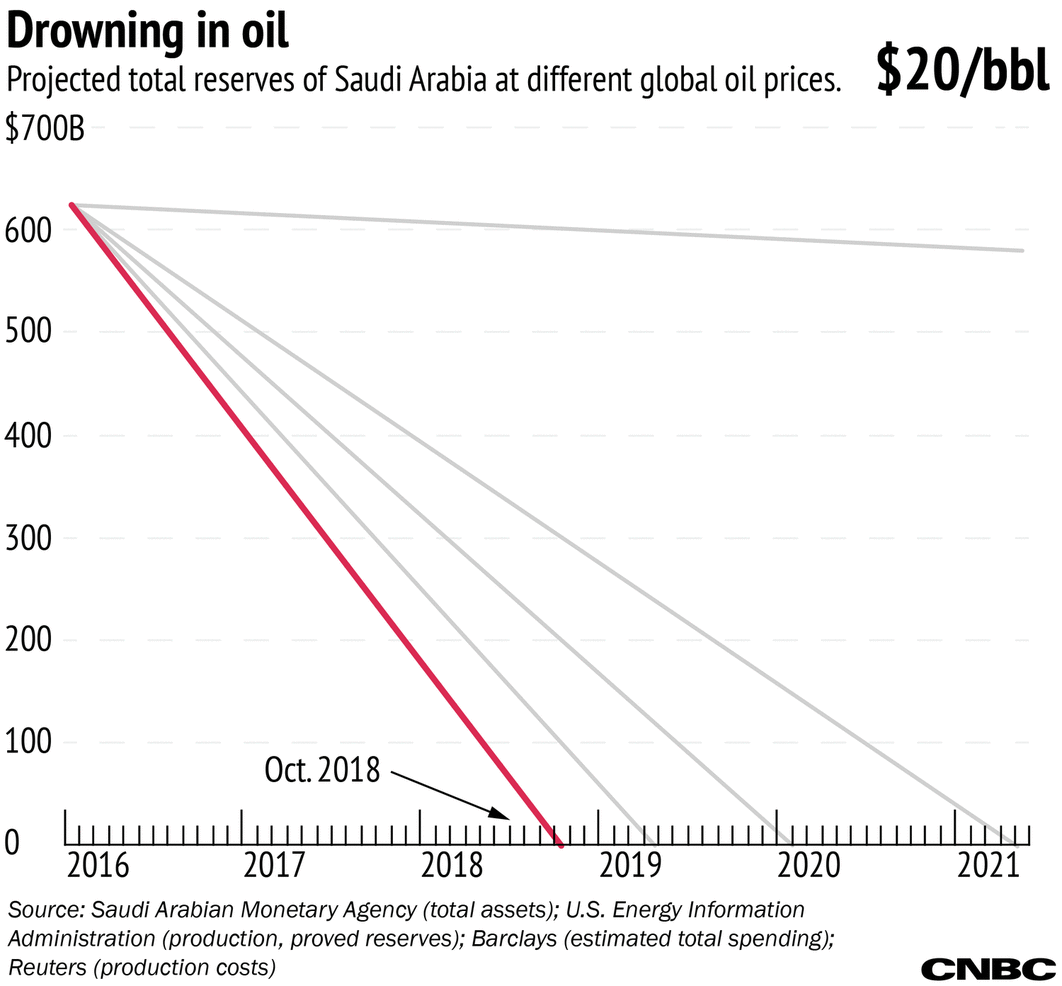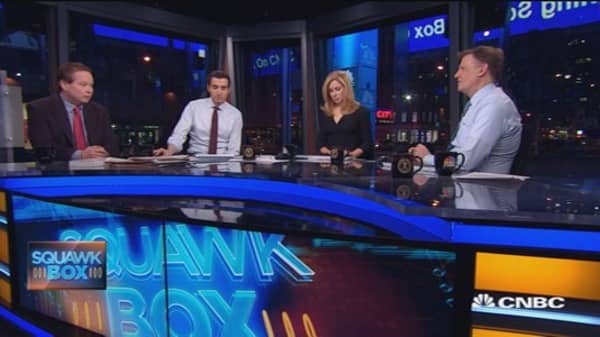Many oil-dependent nations are having to dig deep to balance budgets, with crude oil fetching so little on the global market. Money-rich nations like Qatar and Kuwait look to be getting by, while poorer nations like Libya have descended further into strife and civil war. Oil would need to be selling for $269 a barrel for Libya to balance its budget, according to the IMF.
Saudi Arabia is somewhere in between: a stable nation with a sizable backup of reserve assets, somewhere around $624 billion as of December. But much of that stability is bought with government jobs and generous public spending and with falling oil prices, the country has had to dip into its reserve assets to make up the difference.
Of course, the analysis depends on no major economic changes or events affecting Saudi Arabia. It also assumes oil prices remain low, which experts consider likely for the time being.
CNBC looked at the country's finances back in August, when oil swung between $48 and $41 a barrel. It had fallen a long way from its highs of $65 a barrel a few months before, but our lower estimate for its direction was way off. At the time, CNBC estimated the Saudis would be broke in August 2018, yet that was based on oil at $40 a barrel and before the Saudis cut public spending.
The 2016 Saudi budget includes a spending cut of 13.8 percent from 2015 levels, though projections from Barclays puts that cut closer to 5 percent. Even so, the country is expected to reach a budget deficit of 12.9 percent of GDP in 2016, according to the investment bank.













